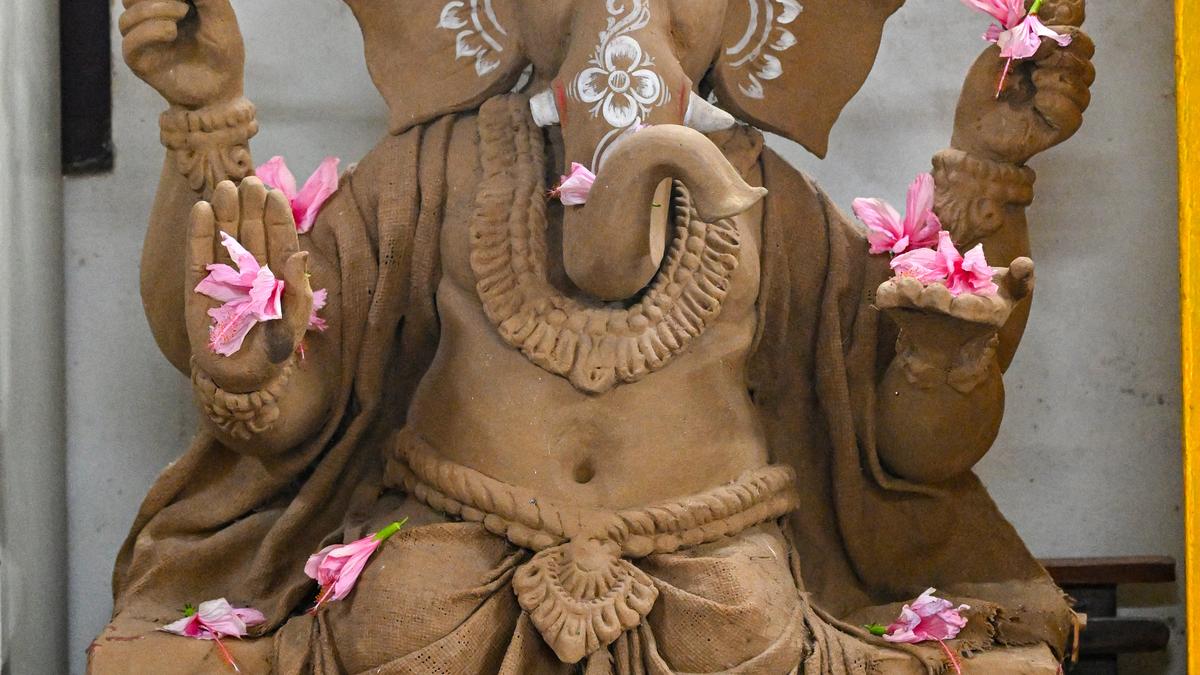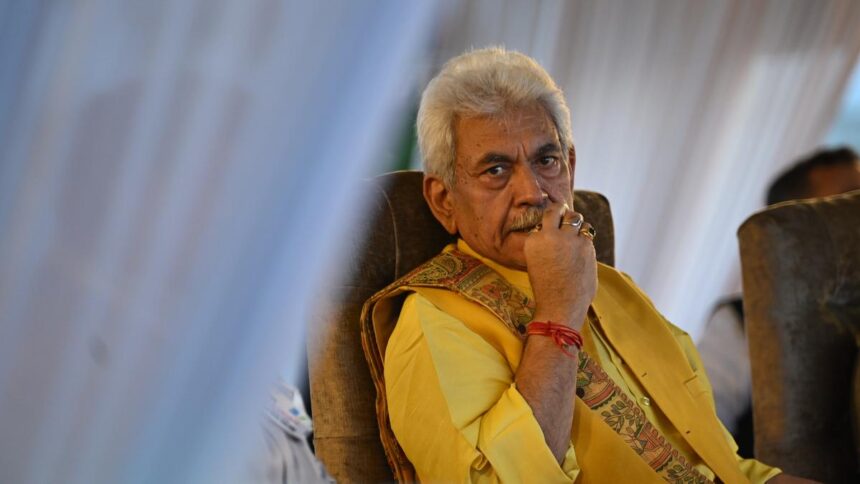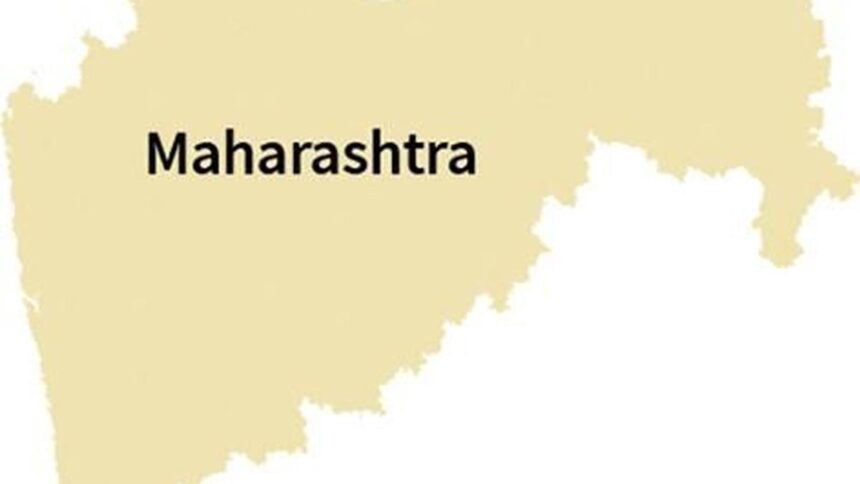
A clay Ganesha idol without chemical colours.
| Photo Credit: KR Deepak
Vinayaka Chaturthi in Visakhapatnam this year has unfolded as both celebration and conversation. While celebrations at many places have shifted towards idols that honour both devotion and responsibility to Nature, the continued presence of Plaster of Paris idols in several pandals is a reminder of the challenges ahead. Yet, as more organisers and communities begin to adopt eco-friendly practices, they are creating examples that may influence others in years to come. From coconut shells and paddy, to sarees and clay, here are communities and organisers who have chosen to reinterpret Ganesha in ways that leave behind no harmful trace.
Coconut Ganesha at Jagadamba
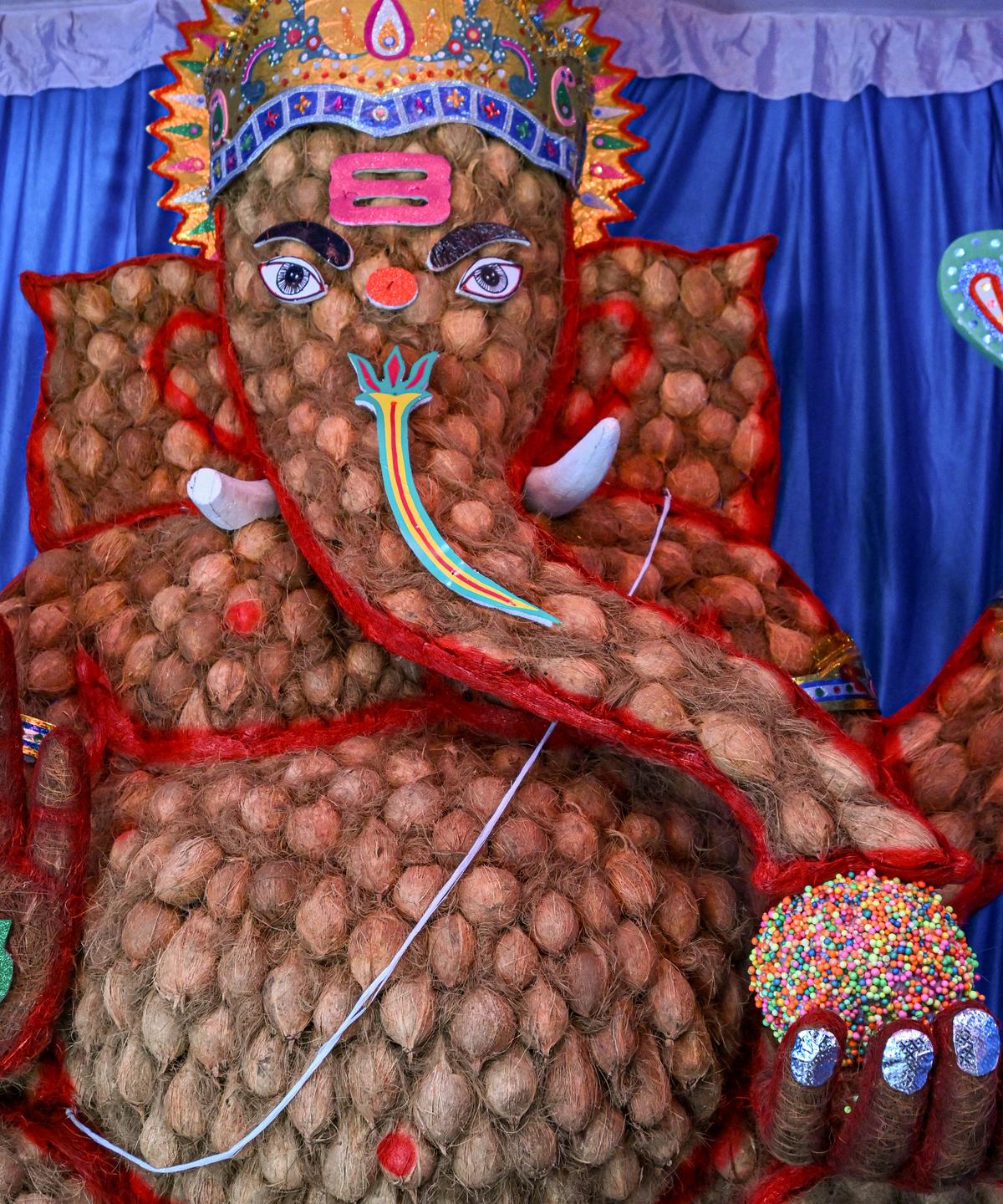
A 12 feet high Ganesha idol made with 900 coconuts as part of an eco-friendly initiative at CMR in Visakhapatnam.
| Photo Credit:
KR Deepak
At Jagadamba Junction, the CMR group has placed a striking 12-foot idol crafted entirely out of 900 coconut shells. The installation, which draws a steady stream of visitors to the mall, is both a tribute to Nature and a continuation of a tradition the group has nurtured for over two decades. Every year, CMR has been introducing idols shaped with materials such as turmeric, fruits, sugarcane, and other natural products, with an emphasis on reusability and safe disposal.
This year’s coconut Ganesha is both an aesthetic and practical creation. Prasadam is being offered to visitors in mornings and evenings, while the coconuts will later be distributed among devotees. By designing idols that can eventually be consumed, planted, or reused, the organisers have sought to reduce the need for immersion in water.
Saree Ganesha at Lanka Grounds
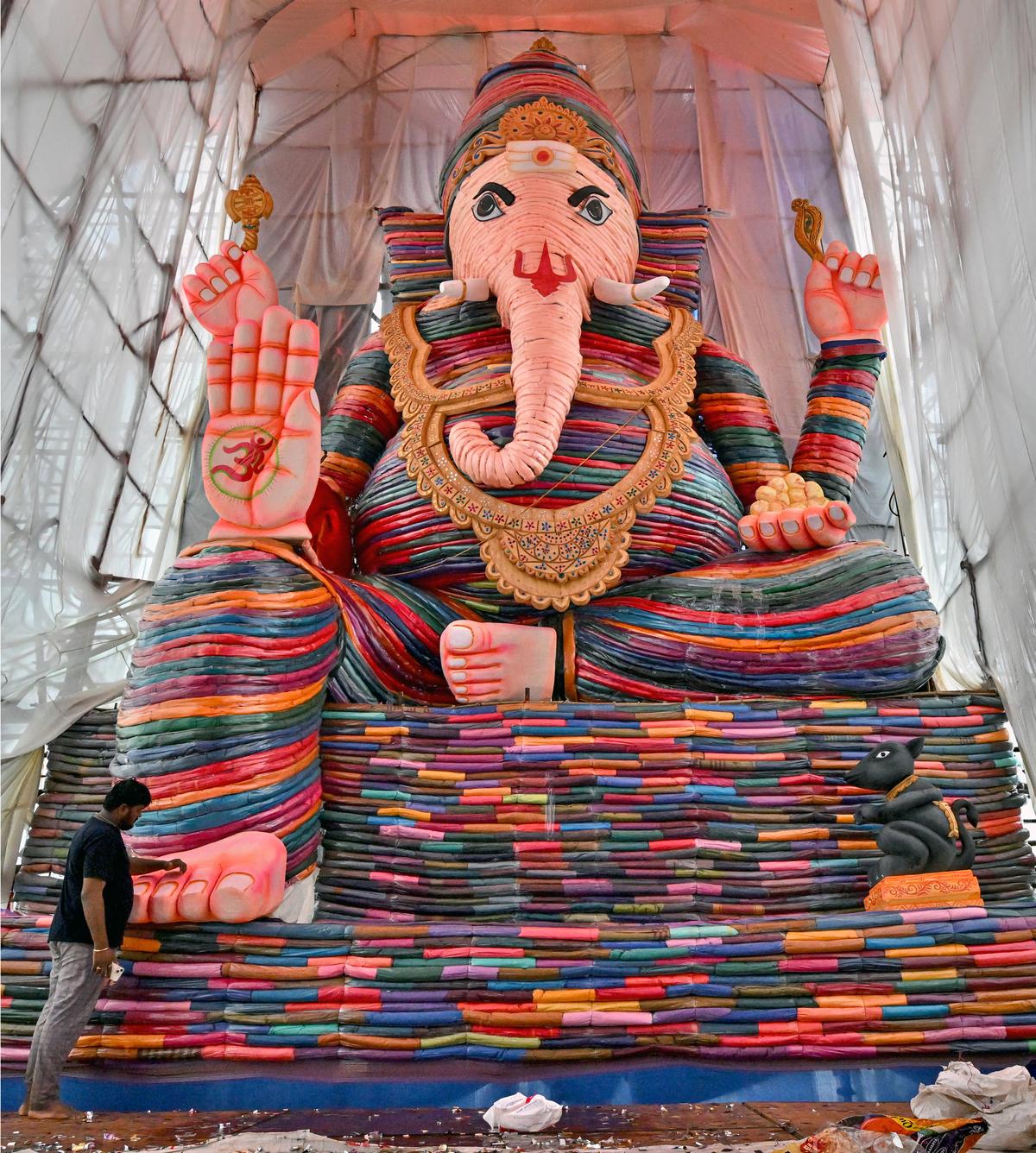
Ganesh idol made using one lakh sarees in Lanka Grounds at Gajuwaka in Visakhapatnam.
| Photo Credit:
KR Deepak
The celebrations at Gajuwaka’s Lanka Grounds have captured attention with their sheer scale. Standing at 89 feet, Sri Sundara Vastra Maha Ganesha has been crafted from one lakh sarees. Conceived by SV Entertainments, the idol rests upon a bamboo frame and is clothed in fabric collected from across the country, including cities such as Mumbai, Chennai and Surat.
Visitors arrived steadily soon after its unveiling on Wednesday, and the grounds continue to draw devotees in good numbers. Beyond its size and spectacle, the idol has been designed with a clear plan for reuse. Once the festival concludes, the sarees will be distributed among devotees, extending the spirit of the festival into community welfare.
Paddy Ganesha at Driver’s Colony
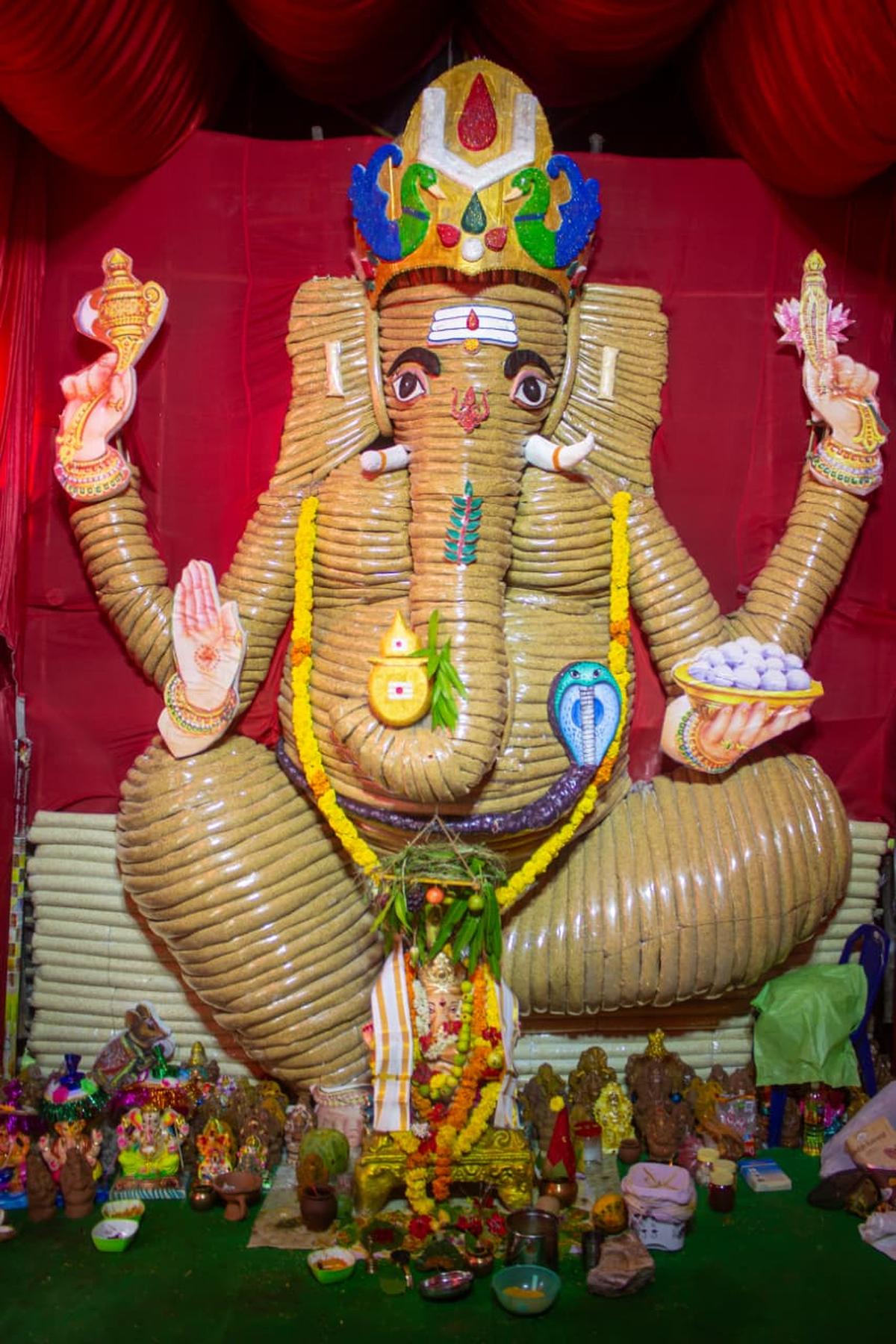
The 15-foot idol made with paddy and puffed rice at Gajuwaka in Visakhapatnam.
| Photo Credit:
SPECIAL ARRANGEMENT
In contrast to the grandeur of Lanka Grounds, Driver’s Colony in Srinivas Nagar at Gajuwaka has chosen a quieter yet equally thoughtful approach. Here, the Eco Friendly Ganesha Youth Organisation has unveiled a 15-foot idol constructed from 400 kilograms of paddy and 30 kilograms of puffed rice. Artisans from Chirala in Andhra Pradesh shaped the figure, weaving together traditional craft knowledge with local agricultural produce.
Until this year, the organisers had always bought clay idols. Their decision to turn to grain arose from a collective desire to align their devotion with environmental consciousness. After nine days of worship, the paddy will be processed and distributed among devotees.
A community embraces simplicity
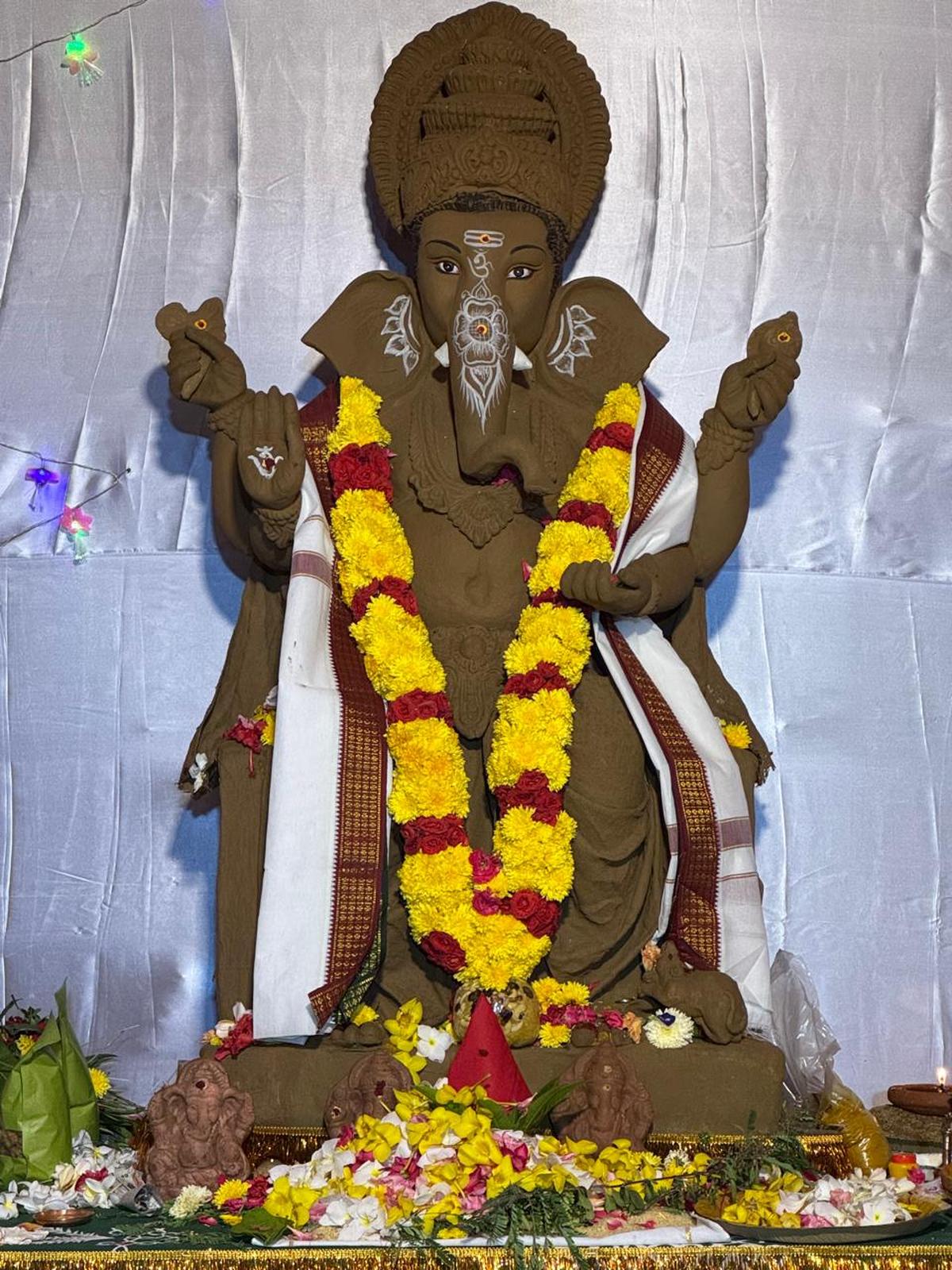
Clay idol at Sunny Isles Housing Society in Visakhapatnam.
| Photo Credit:
SPECIAL ARRANGEMENT
Across the city, neighbourhoods are alive with festive music and prayer, yet Plaster of Paris idols remain a concern. Despite awareness campaigns, many pandals continue to display chemically painted figures, and vendors often mislead buyers by labelling PoP as clay. Within this context, the decision of the residents of Sunny Isles Housing Society at Pedda Rushikonda acquires significance.
The community sourced their five-foot idol from Sankalpa Art Village at Pedagadi, made entirely with clay and husk, with no chemical colours. The idol was shaped by artisans from West Bengal who specialise in traditional methods. Dr Sravani Sandhya Bikkina, a resident, explains that the choice required collective persuasion. “It took us some effort to encourage a celebration with an idol that is earthy and without any colours,” she says. “Every year, the clothes and decoration for Ganesha are recycled and reused. We try to stay true to the definition of a zero-waste celebration.”
Published – August 28, 2025 03:36 pm IST







